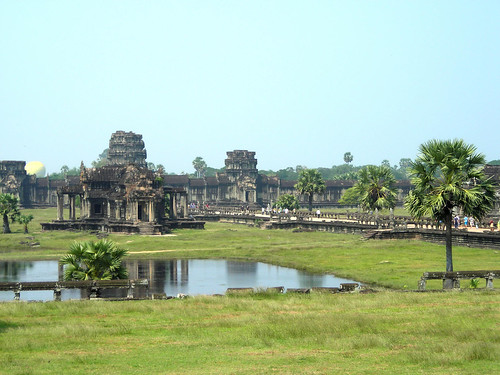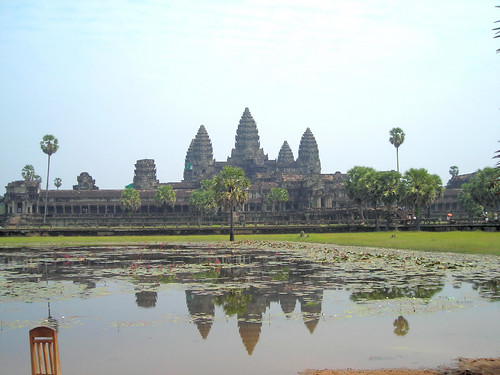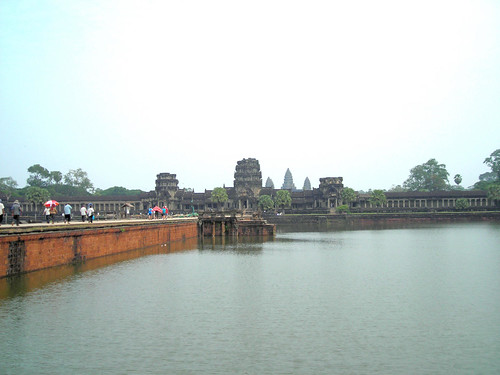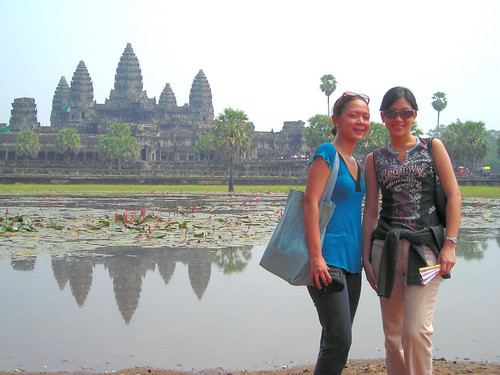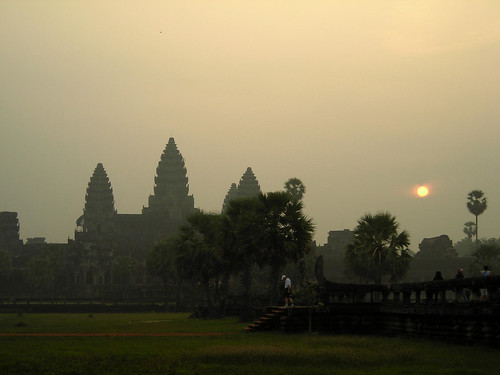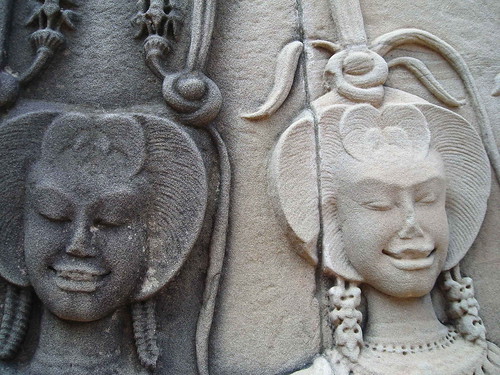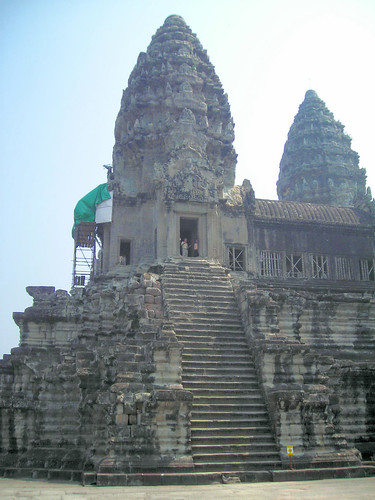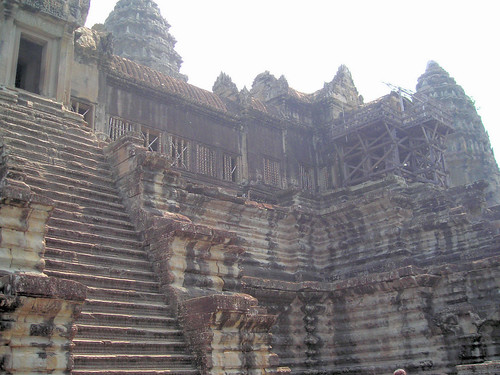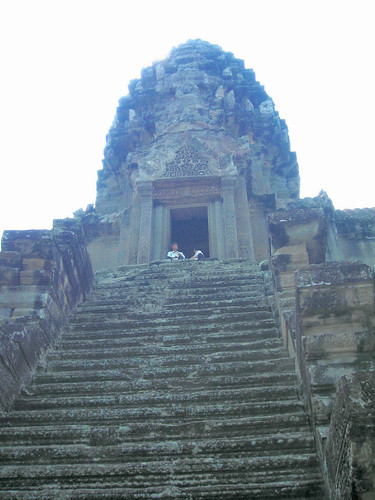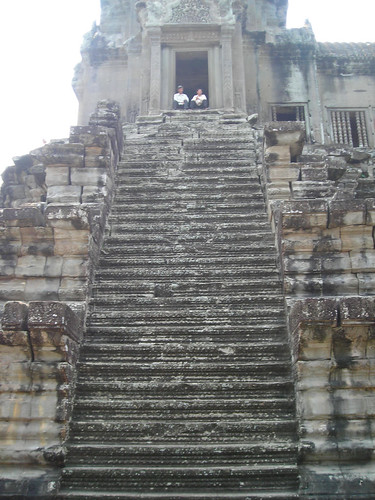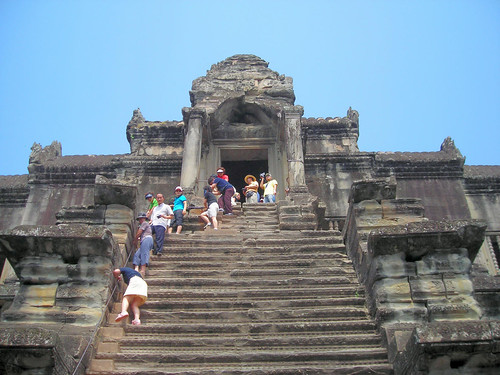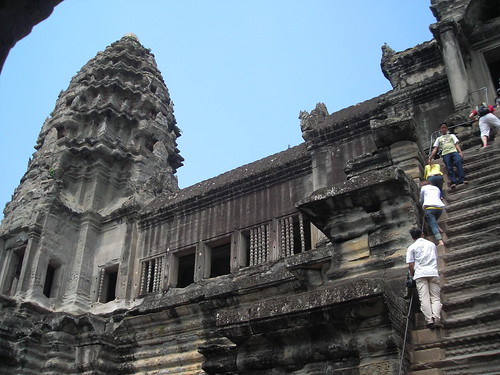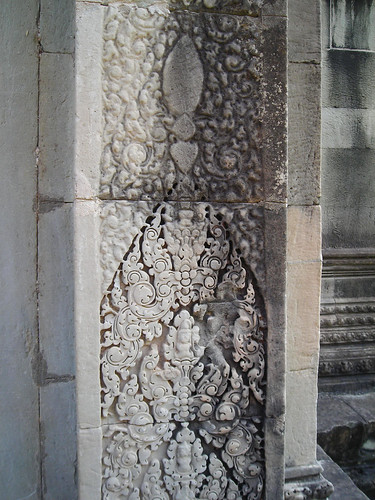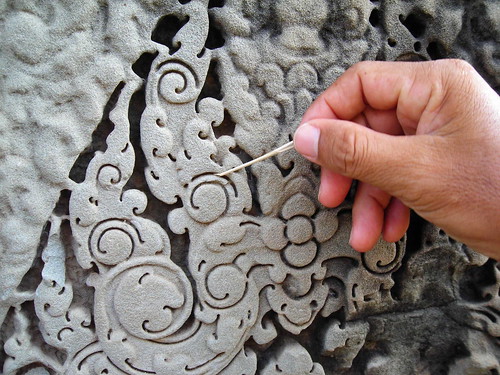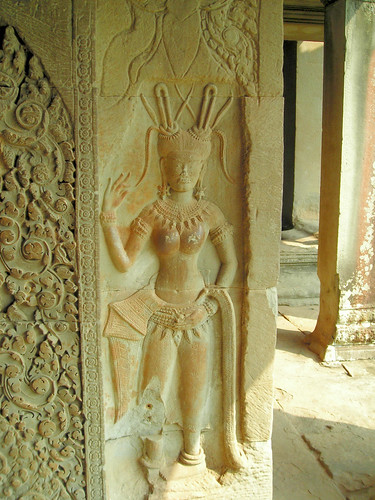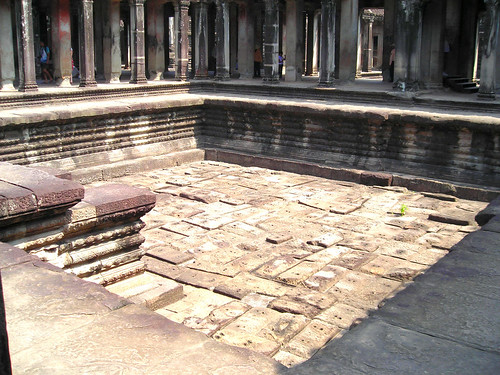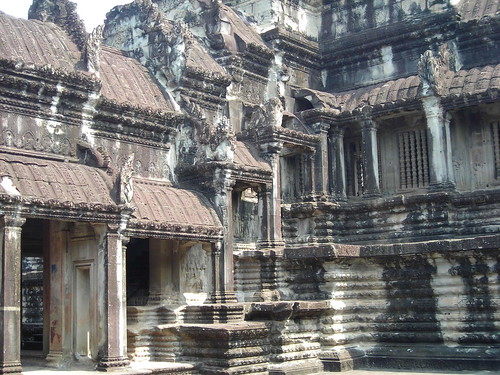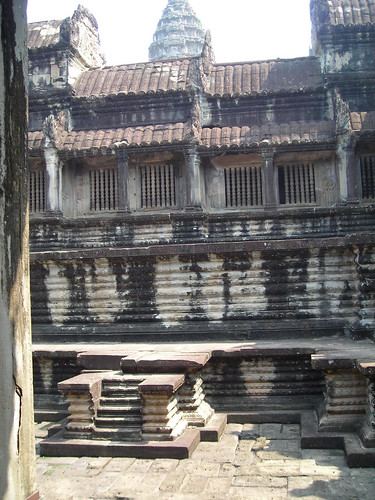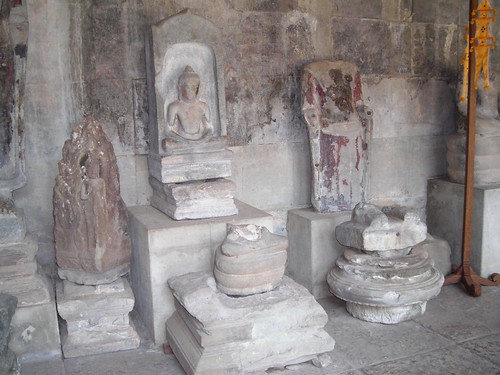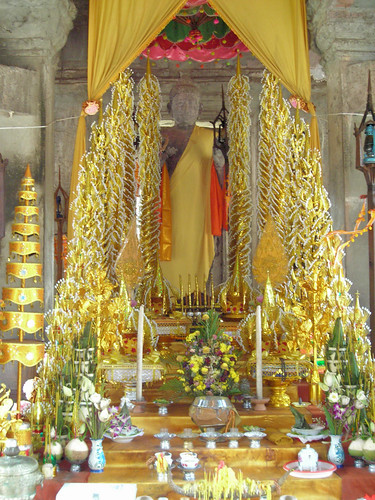 Main entrance to Samre's inner enclosure
Main entrance to Samre's inner enclosure
Still in awe from the *miniature* magnificence and beauty of Banteay Srei (and still rather *shaken* from the aggressive vendors encounter), Mr. Hav informed us that he would be taking us next to Banteay Samre, a “large, relatively flat temple” southeast of Bateay Srei and about 3 kilometers off the grand circuit.
Banteay Samre was built during the first half of the 12th century, around the same time as Angkor Wat. This is why its towers and balustrades bear a strong resemblance to the towers of Angkor Wat (and even more so to the Khmer temple of Phimai in Thailand, like a compacted version of it).
Unlike Srei, Samre was situated in a sort of inner sanctum (“present-day relative isolation” in some books), sitting silently at a distance, away from the bustle of tuk-tuks and motor vehicles plying their way along the main road. Mr. Hav dropped us off at the entrance path, where swarms of hawkers instantly surrounded our tuk-tuk like flies to raw meat, delivering their practiced lines.
The drop-off point was a few minutes’ walk to the temple, and the walk was an appropriate build-up to Samre’s atmosphere – serene and meditative in its seclusion, as if the temple itself was communing with nature. As we neared the ancient structure a few vendor stalls sat outside selling food and drinks to tired, hungry and thirsty tourists, while books were also on sale to satisfy the less corporal variety of hunger and thirst.
The end from which we entered seemed like just one of the side entrances, but its steps were massive in size and elevated the temple grounds a good five feet or so. We made sure to take a picture of ourselves against the steps to illustrate how the temple dwarfed us from its perch:

It was rather different from that of Srei, perhaps because fewer people visited Samre, but it was also different in that it was less elaborate and decorated and therefore did not overwhelm one’s senses. It was simple in both design and structure -- at least as far as we could see -- and the silence was the perfect complement to Samre’s spirit.
The elevated temple, hidden from the rest of the world by trees and grass, gave it a distinct feel of grandeur. Like Srei, it was a series of concentric squares inside; what set Samre apart from Srei was how its wide outer walls were separated from the temple’s inner enclosure by grass, as if a mote had been there once. This left a vast space in between the walls and the tower complex that lent a spacious air to the structure, while the green grass added more life and color to the panorama.
The walls were connected to the main tower by four terraced staircases going down and up the grass, one on each direction of the compass – North, South, East and West. Because it was getting late we did not venture forth into the inner enclosure anymore, for fear that in the dark tower nobody will hear us scream for help, especially with very few people around to actually hear us.
(Perhaps the hawkers have bionic ears and will come to save us, after which we will be forced to buy their goods, which in itself is quite a frightening thought.)

View of entrance to the inner closure from the outer wall


The grass separating the outer wall and the inner closure. The terraced steps leading to the inner enclosure (bottom).


Close-up of the outer wall and its galleries


Walkway within Samre's outer wall
The highlight of our visit to Banteay Samre, however, was when we discovered the naga (five-headed serpent) and lion sitting atop the temple’s main entrance, which was apparently a very common motif in most of Angkor Wat’s temples. The naga and lion were built above Samre’s entrance causeway (which now faced a forest, with no accessible pathway for tourists) to serve as sentinels. Standing guard and keeping watch over all who entered the temple, they served the majestic purpose of protecting the gods.
The lions, in particular, guarded all three sides of the entrance, even where there were no visible steps which people could climb. We giggled our little schoolgirl giggles at how the lion’s behinds had deep holes in them, as all anal jokes make people giggle or laugh. (Later on we learned from our tour guide that those holes used to hold the golden tails of those lions, which have naturally been looted a long time ago.)
The view from above was splendid, and down the steps we could see the fragmented causeway, which trailed long and soon disappeared into the forest’s foliage. The path’s railing was lined by equally fragmented stones representing the naga’s body, which led all the way up to its head at the top of the stairs.
 Samre's entrance causeway, viewed from the top step. Note the holes where the lions' golden tails used to be, and the broken railings representing the naga's body.
Samre's entrance causeway, viewed from the top step. Note the holes where the lions' golden tails used to be, and the broken railings representing the naga's body.
Standing there and taking it all in, the sight of overgrown forests adding to Banteay Samre’s romance, we stood a moment and tried to feel Samre’s spirit conversing with nature about the past, present and future, about how many more will try to loot it, and how long until the nagas and the lions give up in keeping futile watch of it; about how long until nature claims its own and Banteay Samre finally dissolves into the earth, taking with it all its riches, its stories, its religion, its life.
